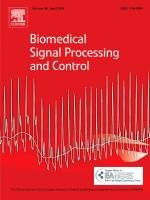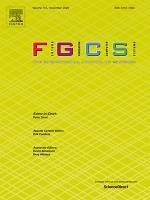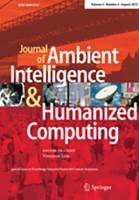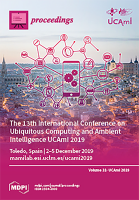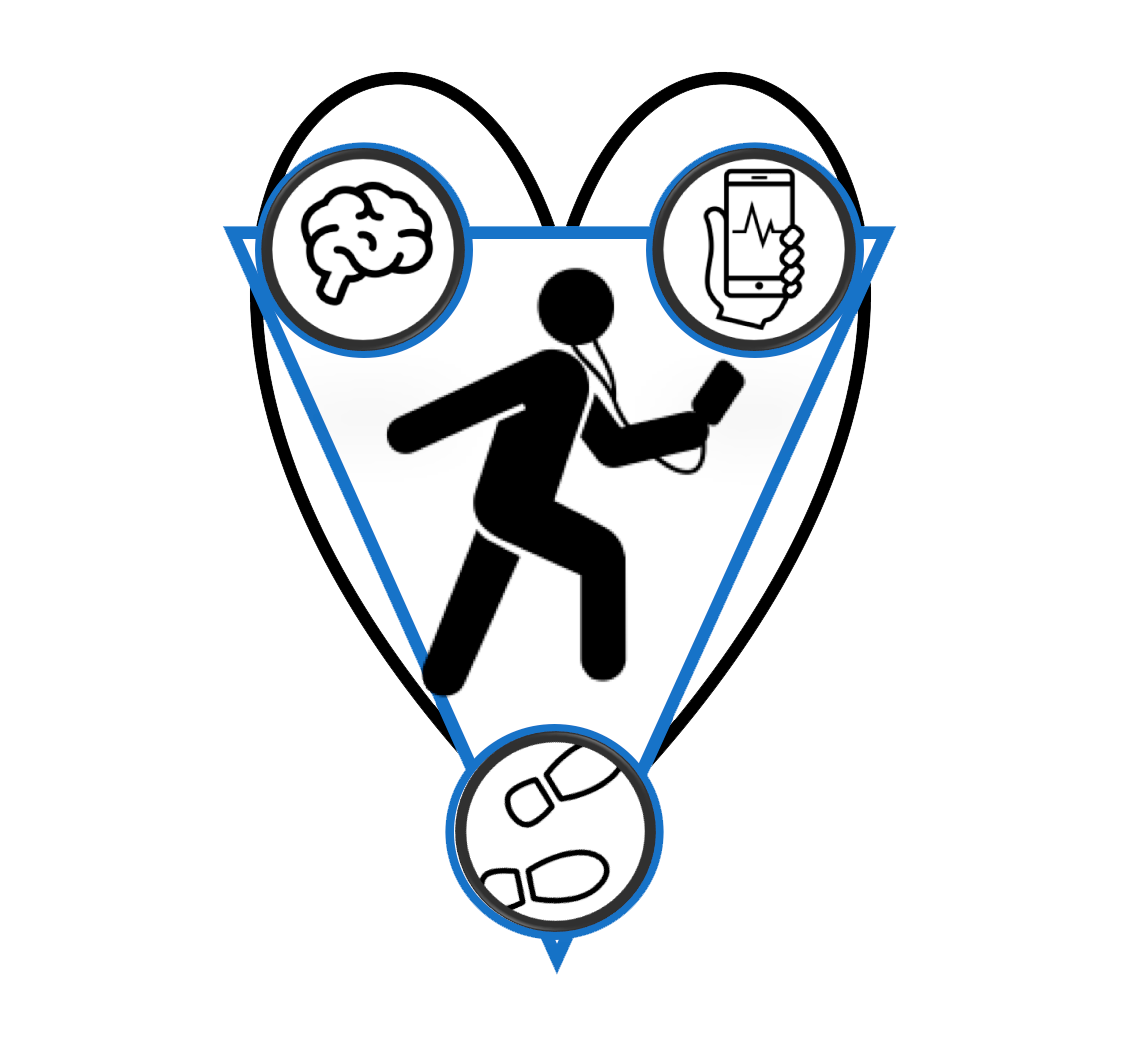
2019 - 2022
M4S: Mobile-computing-based Multitasking for Mild cognitive impairment Monitoring and early Screening
This project aims to study the impact of the cognitive condition on the interaction and use of smartphones in order to support the early diagnosis of mild cognitive impairment. User Behavior and Interaction Patterns (called BIPs) will be studied as part of dual tasks in which the user is, in this case, walking (including gait analysis) and using the smartphone at the same time.

Overview
Mild Cognitive Impairment (MCI) is defined as a “cognitive decline greater than expected for an individual’s age and education level, but that does not interfere notably with activities of daily life”. First signs of MCI are difficulties in the performance of everyday activities, particularly haptic activities, such as interaction with a mobile device. The functional evaluation is typically performed during dual tasking. The three pillars of this project are:
- Cognition (based on Electroencephalography analysis EEG)
- Gait (using sensorized insoles to perform quantitative gait analysis, QGA)
- Haptic interaction with mobile devices
The hypothesis is that long-term monitoring of interaction patterns with mobile devices on the move (walking, running, etc.) can be correlated with the onset of cognitive decline and support the early diagnosis of MCI.
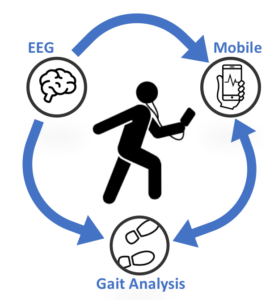
Planning
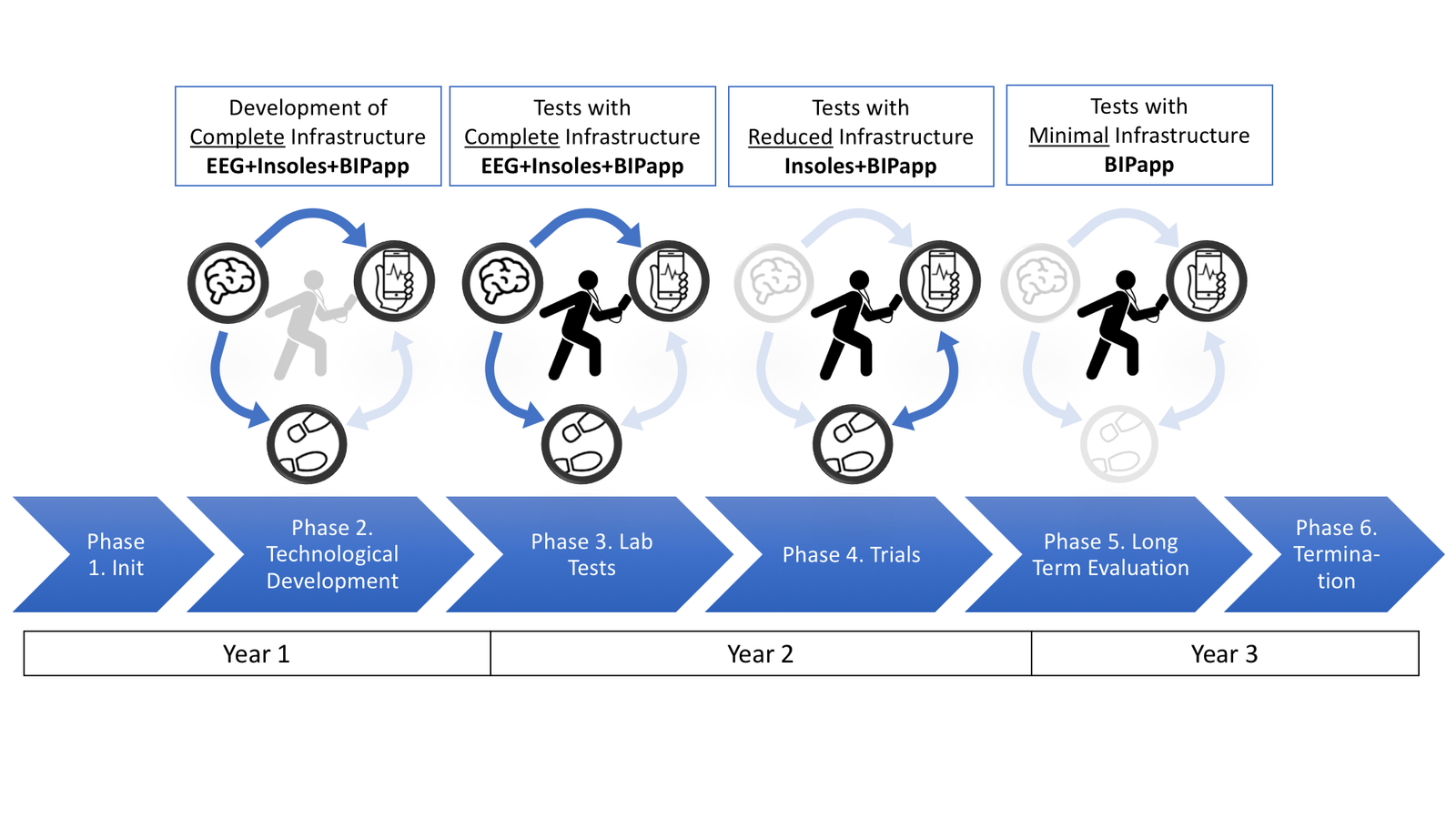
The M4S project is being developed from January 2019 to December 2021.
This project has been divided into 6 phases, which includes the different stages of technological infrastructure involved, which will be reduced throughout the duration of the project.
The methodology follows an iterative and incremental process to progressively think, build and evaluate the system to reach the marked objectives. Each phase will generate a series of artefacts that serve as input for following stages, and enable us to meet partial goals (defined as operative objectives), to finally meet the general objective.
Work Packages
Coordination, Management and Dissemination
Transversal aspects of the project. Ethical and privacy implications are monitored and ensured.
Hw/Sw Artefacts Development
Design, development and refinement of Hw and Sw elements of the technological infrastructure for everyday monitoring of dual-tasking.
End-user Evaluation
Set of tasks related with the design and execution of evaluation activities including lab tests, trials and long term evaluation.
Data processing and analysis
Data science and analytics - related tasks to curate data and extract knowledge from dataset generated in end-user evaluations.
Research Team

Dr. Ramón Hervás

Dr. José Bravo
- Jesús Fontecha (UCLM, Computing Engineer)
- Javier Navarro (UCLM, Geriatrician)
- Inocente Sánchez (UCLM, Teleco Engineer)
- Iván González (UCLM, Computing Engineer)
- Tania Mondéjar (UCLM, Psychologist)
- Esperanza Johnson (UCLM, Computing Engineer)
- Alberto Pinto (UCLM, Physical Activity)
- Luis Cabañero (UCLM, Computing Engineer)
- Vladimir Villarreal (UTP, Panama)
- Chris Nugent (Ulster University, U.K.)
- Thusha Rajendran (Heriot Watt, U.K.)
- Theodore Lim (Heriot Watt, U.K.)
- Sergio Ochoa (University of Chile)
Results
Incorporating Affective Proactive Behavior to a Social Companion Robot For Community Dwelling Older Adults
by Ramón Hervás, Alfonso Barragán, Luis Cabañero, Laura Villa, Tania Mondéjar
Applied Sciences. 2023; 13(16):9204 (ISI-JCR'22 Q2 IF:2.7)
The widespread use of mobile phones in daily life makes them a fundamental tool for the study of human behavior. In particular, they can be used as a source of additional information to help to diagnose diseases. This work is based on contrasted dual-tasking tests where cognitive performance is studied by performing tasks of high cognitive load while walking. In this case, we study significant differences in mobile device use among groups of people of different ages and examine whether they are more characteristic when the interaction takes place on the move. A study is conducted by monitoring the interaction with the mobile device for one consecutive week and analyzing the correlations between these interactions and the participants’ ages. Additionally, a user profiling model is designed to help to use this ground truth in future works focused on the early diagnosis of cognitive deficits. The results obtained contribute to preliminarily characterizing how age-related normotypical cognitive decline affects interactions with mobile devices. In addition, the pilot study generates a dataset with monitored events and interactions of 45 users that includes more than 4.5 million records.
Analysis of Dual-Tasking Effect on Gait Variability While Interacting with Mobile Devices
by David Carneros-Prado, Cosmin C. Dobrescu, Iván González, Jesús Fontecha, Esperanza Johnson, Ramón Hervás
Mathematics 2023, 11(1), 202 (ISI-JCR Q1 IF:2.4)
Cognitive deficits are very difficult to diagnose during the initial stages; tests typically consist of a patient performing punctual dual-task activities, which are subjectively analyzed to determine the cognitive decline impact on gait. This work supports novel and objective diagnosis methods by stating a baseline on how neurotypical aging affects dual tasks while using a smartphone on the move. With this aim, we propose a twofold research question: Which mobile device tasks performed on the move (dual tasking) have characteristic changes in gait parameters, and which are especially characteristic at older ages? An experiment was conducted with 30 healthy participants where they performed 15 activities (1 single task, 2 traditional dual-tasks and 12 mobile-based dual-tasks) while walking about 50 m. Participants wore a wireless motion tracker (15 sensors) that made the concise analysis of gait possible. The results obtained characterized the gait parameters affected by mobile-based dual-tasking and the impact of normal cognitive decline due to aging. The statistical analysis shows that using smartphone-based dual-tasking produces more significant results than traditional dual-tasking. In the study, 3 out of 10 gait parameters were very significantly affected (p < 0.001) when using the traditional dual tasks, while 5 out of 10 parameters were very significantly affected (p < 0.001) in mobile-based dual-tasking. Moreover, the most characteristic tasks and gait parameters were identified through the obtained results. Future work will focus on applying this knowledge to improve the early diagnosis of MCI.
eeglib: A Python module for EEG feature extraction.
by Luis Cabañero, Ramón Hervás, Iván González, Luis Rodríguez-Benítez
SoftwareX, 15, July 2021, 100745 (JCR'20 Q3 IF: 1.959)
Electroencephalography (EEG) signals analysis is non-trivial, thus tools for helping in this task are crucial. One typical step in many studies is feature extraction, however, there are not many tools focused on that aspect. In this paper, eeglib: a Python library for EEG feature extraction is presented. It includes the most popular algorithms when working with EEG and can be easily combined with popular Python libraries. This paper also presents a simple workflow for creating features dataset which allows a high degree of customization and that is suitable for both experts and newcomers.
Studying the generalisability of cognitive load measured with EEG
by Luis Cabañero-Gómez, Ramón Hervás, Iván González, Vladimir Villarreal
Biomedical Signal Processing and Control, 70, September 2021, 103032 (JCR Q2 IF: 5.076)
Cognitive load is defined as the information the working memory is holding at specific moment. It has been studied not only in education but also in medicine, particularly regarding the diagnosis of disorders such as mild cognitive impairment. In our study, we examined the generalisability of cognitive load metrics obtained with electroencephalography (EEG) across various participants and contexts in four combinations: (a) inter-subject and intra-context, (b) inter-subject and inter-context, (c) intra-subject and intra-context, and (d) intra-subject and inter-context.
Characterisation of mobile-device tasks by their associated cognitive load through EEG data processing.
by Luis Cabañero, Ramón Hervás, Iván González, Jesús Fontecha, Tania Mondéjar, José Bravo
Future Generation Computer Systems 113, pp. 380-390, December 2020 (JCR'19 Q1 IF: 6.125)
This work aims to take the first steps towards that ambitious goal: to determine the cognitive load required for different typical tasks with smartphones. By properly identifying which tasks require a higher cognitive load, we will be able to start studying metrics and indicators that contribute to the early diagnosis of cognitive pathologies. The analysis of cognitive load was carried out after an experiment with 26 users who performed 12 typical tasks with a mobile device while their brain activity was monitored through electroencephalography. The results identify that there are clearly tasks with a higher cognitive demand, with audio production and consumption being the most notable, which has been validated experimentally and statistically.
eeglib: A library with tools and functions for EEG signal analysis
by Luis Cabañero, Ramón Hervás
The module eeglib is a library for python 3.4+ that aims to be a set of tools to analyse EEG signals. It defines some data structures as well as some processing in order to make easier to work with EEG data.
Main features
- Different types of processings (FFT, Averaged amplitude for each band, Synchronization Likelihood, Petrosian and Higuchi Fractal Dimensions, Hjorth Parameters, Detrended Fluctuation Analysis, Multiscale Sample Entropy, Lempel-Ziv Complexity, Cross Correlation Coefficient)
- Load data from CSV files, Works with windows & Flexible to use
EEG data performing typical tasks with smartphone
by Luis Cabañero, Ramón Hervás, Iván González, Jesús Fontecha
26 participants performed 12 tasks considered in the HuSBIT-10 taxonomy. EEG activity was recorded during each tasks for a 10-second interval (EEG segment). The task performed are: C1 Read a message, C2 Listen to a voice recording, C3 Watch a video, E2 Count the number of beach umbrellas in a picture from Where's Wally?, E3 Switch off the data roaming in the device settings, E4 Search how to reach a given place (about 500 meters away) in the map from the current location, M2 Add and move an app shortcut (2 times), M4 Close all the Apps in the brackground, M5 Select one word, then two and, finally, two and a half words in a Wikipedia article, P1 Write down an excuse or justification for not attending with a meeting with someone, P2 Create a voice message answering a friend who has just written about cancelling the meeting, P3 Take an artistic photo of several object around you.
eeglib: computational analysis of cognitive performance during the use of video games
by Luis Cabañero, Ramón Hervás, José Bravo, Luis Rodríguez-Benitez, Chris Nugent
Journal of Ambient Intelligence and Humanized Computing. Springer Nov 2019. (JCR'19 IF: 4,594 Q1)
This paper explores the use of EEG and video games together to find what are the most used techniques when analyzing the signals by means of a systematic review. From the results of that review two partial contributions were obtained: a taxonomy of techniques to analyze EEG signals, and a ranking of these techniques based on their popularity. The partial contributions were the departure point for working in the main contribution of this paper: eeglib, a Python library for analyzing EEG. The library was tested technically and functionally. The technical test was oriented to assess the correct output of certain algorithms, while the functional one consisted in analyzing data from two different experiments to check the effectiveness of the library.
Analysis of Cognitive Load Using EEG when Interacting with Mobile Devices
by Luis Cabañero, Ramón Hervás, Iván González, Jesús Fontecha, Tania Mondéjar, José Bravo
Proceedings, 31(1), 70. October 2019
This paper shows the results of analyzing the cognitive load of a set of characteristic tasks on smartphones. To determine the set of tasks to analyze, this paper proposes a taxonomy of smartphone-based actions defined after considering the related proposals in the literature and identifying the significant characteristics of the tasks to classify them. The EEG data was obtained through an experiment with real users doing tasks from the aforementioned taxonomy. The results show significant differences in the cognitive load of each task category and identify those tasks that involve a higher degree of mental effort. The results will be the starting point of the M4S project that aims to contribute to the early diagnosis of mild cognitive impairment through monitoring everyday dual-tasking in terms of interaction with smartphones.
An Internet of Things infrastructure for gait characterization in assisted living environments and its application in the discovery of associations between frailty and cognition.
by Iván González , Fco Javier Navarro, Jesús Fontecha, Luis Cabanñero-Gómez and Ramón Hervás
International Journal of Distributed Sensor Networks, 15(10), October 2019 (JCR Q4 IF: 1.151)
This article presents an easy-to-deploy and low-cost Internet of Things infrastructure for gait characterization based on a set of wireless inertial sensors, called nodes, connected to the same local area network. These nodes allow acquiring inertial raw data from the trunk of each frail elder involved in explicit gait trials carried out directly in the elderly care homes. The Internet of Things infrastructure has been validated for Quantitative Gait Analysis showing an adequate accuracy in the demarcation of relevant gait events and in the estimation of stride interval variability. The latter, allows us to perform a cross-sectional cohort study and a subsequent multiple logistic regression to evaluate their impact on cognitive functioning. The cohort study and the multivariate regression are performed using a sample of 81 frail elders from two nursing homes in Spain. The results obtained indicate that frail elders aged 90 years or older, with moderate dependence in daily functioning and with a stride interval gait variability greater than 6%, were most likely to suffer cognitive impairment, representing what is called cognitive frail.










